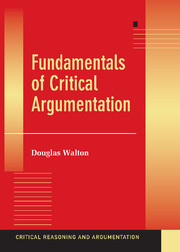FOUR - ARGUMENT DIAGRAMMING
Published online by Cambridge University Press: 05 June 2012
Summary
This chapter is concerned with the task of taking an argument as given in a particular case as a text of discourse and identifying the argumentation as a set of premises presented as reasons to accept a conclusion. Identifying the structure of such a chain of argumentation by means of an argument diagram can be extremely useful prior to criticizing the argument by finding gaps or problems in it and evaluating the argumentation as weak or strong. In this chapter, we do not tackle the problem of how to evaluate argumentation found in a text of discourse. We only confront the prior problems of how to identify and analyze the argument. Of course, some arguments are easier to identify and analyze than others. In an abstract philosophical text, in a complex text of discourse containing technical scientific argumentation, or in a legal case where there is a mass of evidence on some highly contested issue, it may be extremely difficult to analyze the argumentation in any very clear and simple way by using a single diagram that is not filled with complexities. The problem with tackling real cases of arguments in a natural language text of discourse is that there can be gaps, ambiguities and uncertainties about what was really meant. Here we consider only some relatively simple cases that are fairly easy to diagram. Only toward the end of the chapter do we address some of the problems posed by harder cases.
- Type
- Chapter
- Information
- Fundamentals of Critical Argumentation , pp. 138 - 171Publisher: Cambridge University PressPrint publication year: 2005



